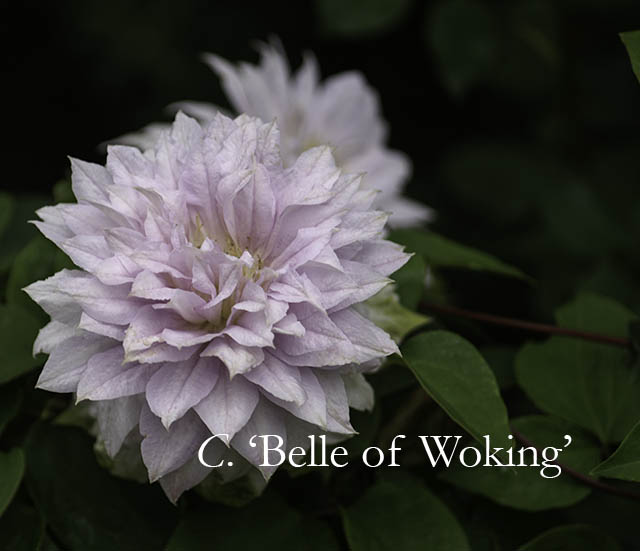One of my pet peeves is when I read about clematis being described as the color “blue” without any kind of coloring disclaimer. The reason I get annoyed is that if you happen to be new to growing clematis and you love the color blue you may decide to purchase one based on written descriptions and/or a pictures of clematis that may have been slightly altered to enhance the blue saturation.
One of the best known examples is Clematis ‘H. F. Young’ which is often depicted (erroneously, in my opinion) as having the same color as a piece of Wedgwood Blue Jasperware. So, I’d like to set this color confusion straight. At the present time there are no “true blue” clematis! Hopefully, with some extraordinary skill and/or luck breeders may eventually be able to create real blue clematis. What we have now are clematis with shades of periwinkle, lavender or purple with maybe a “hint” of blue shading on each tepal.
When describing blue clematis I find the word “periwinkle” to be an extremely handy word to illustrate what some perceive to be “blue” clematis. My definition of the color periwinkle is somewhere between light lavender-blue to purplish-blue with the emphasis on the lavender or purplish instead of the blue.
To visually illustrate what I’m describing I have included a picture of three flowers from the ground cover Vinca minor (common name “Periwinkle”) with a blossom of Clematis ‘Will Goodwin’ which is often described as a clear, mid-blue clematis. As you can see, the two different flowers are almost identical in coloring and from my perspective I can see hardly (if any) blue. Yes, coloring is in the eye of the beholder and you may see more than I do, but I have done my royal duty which is to arm you with this information so you won’t have to be singing the “clematis blues”.
